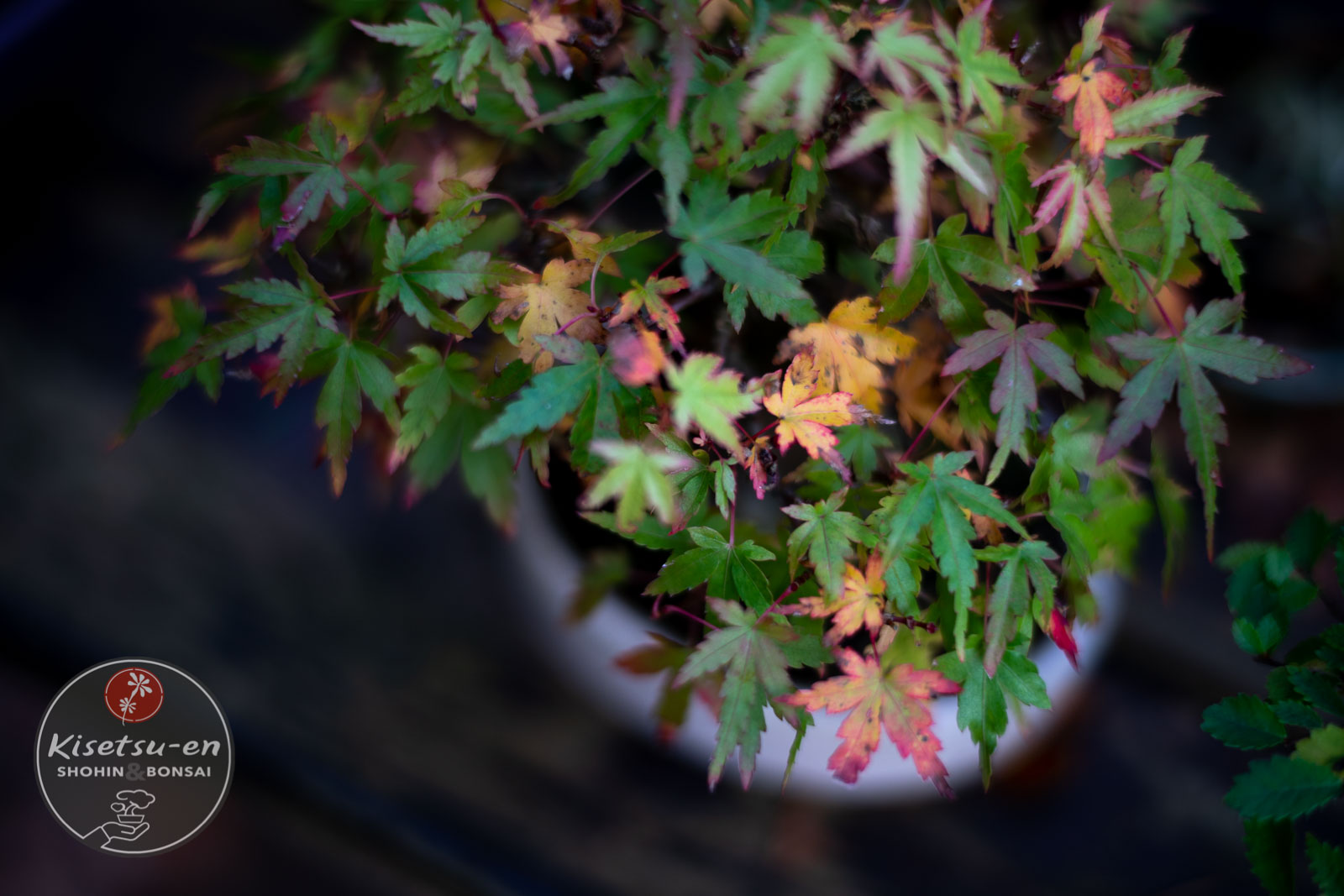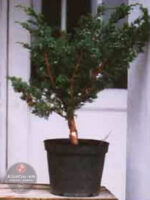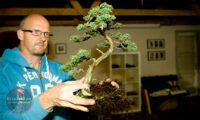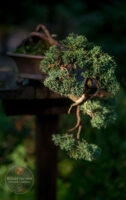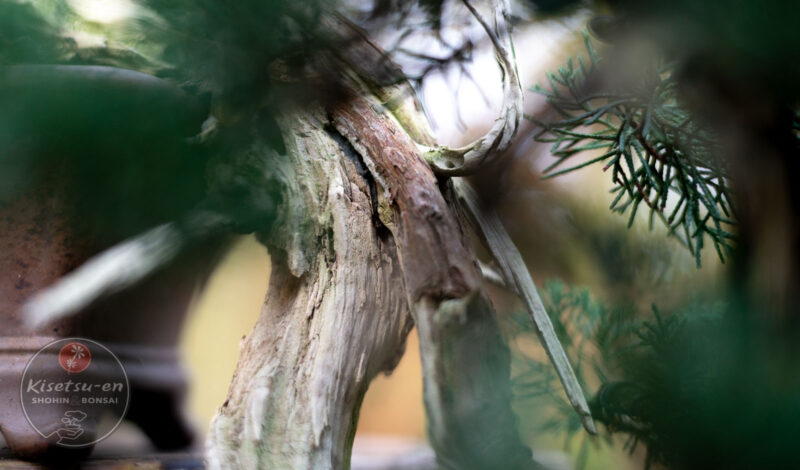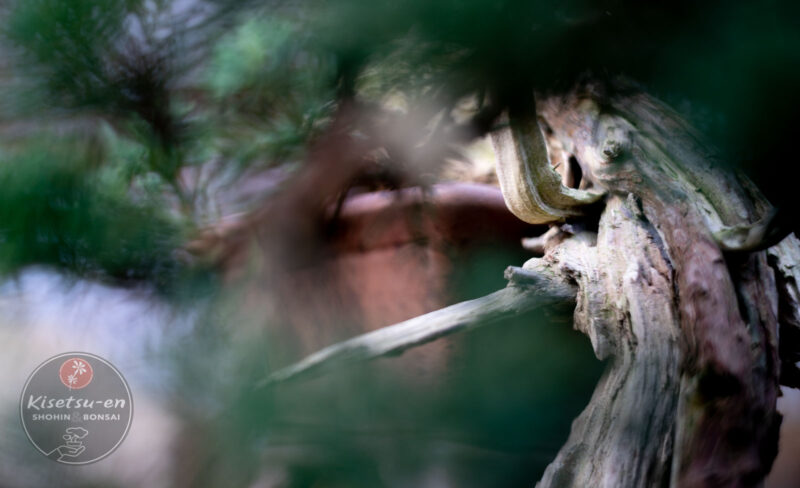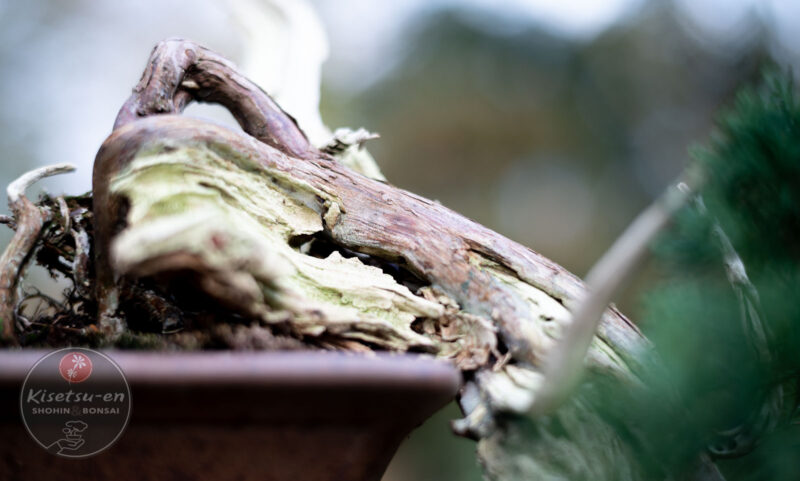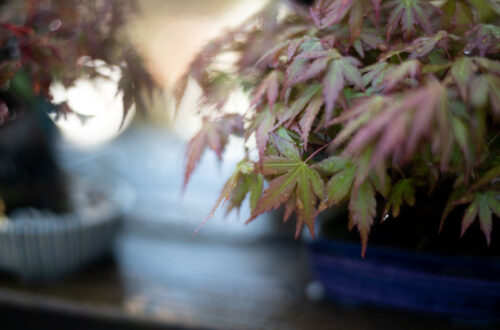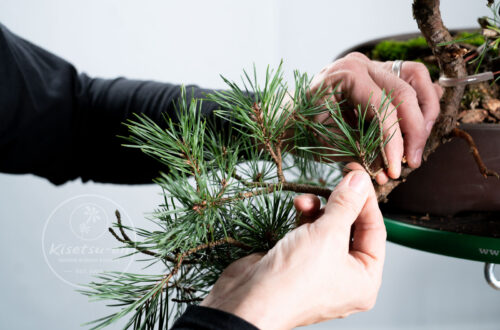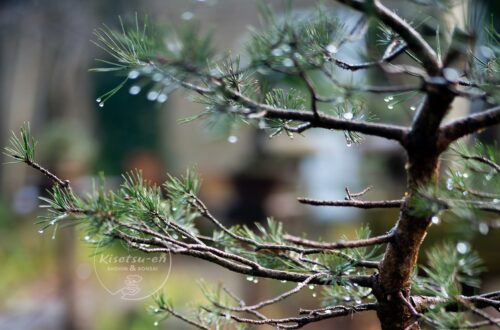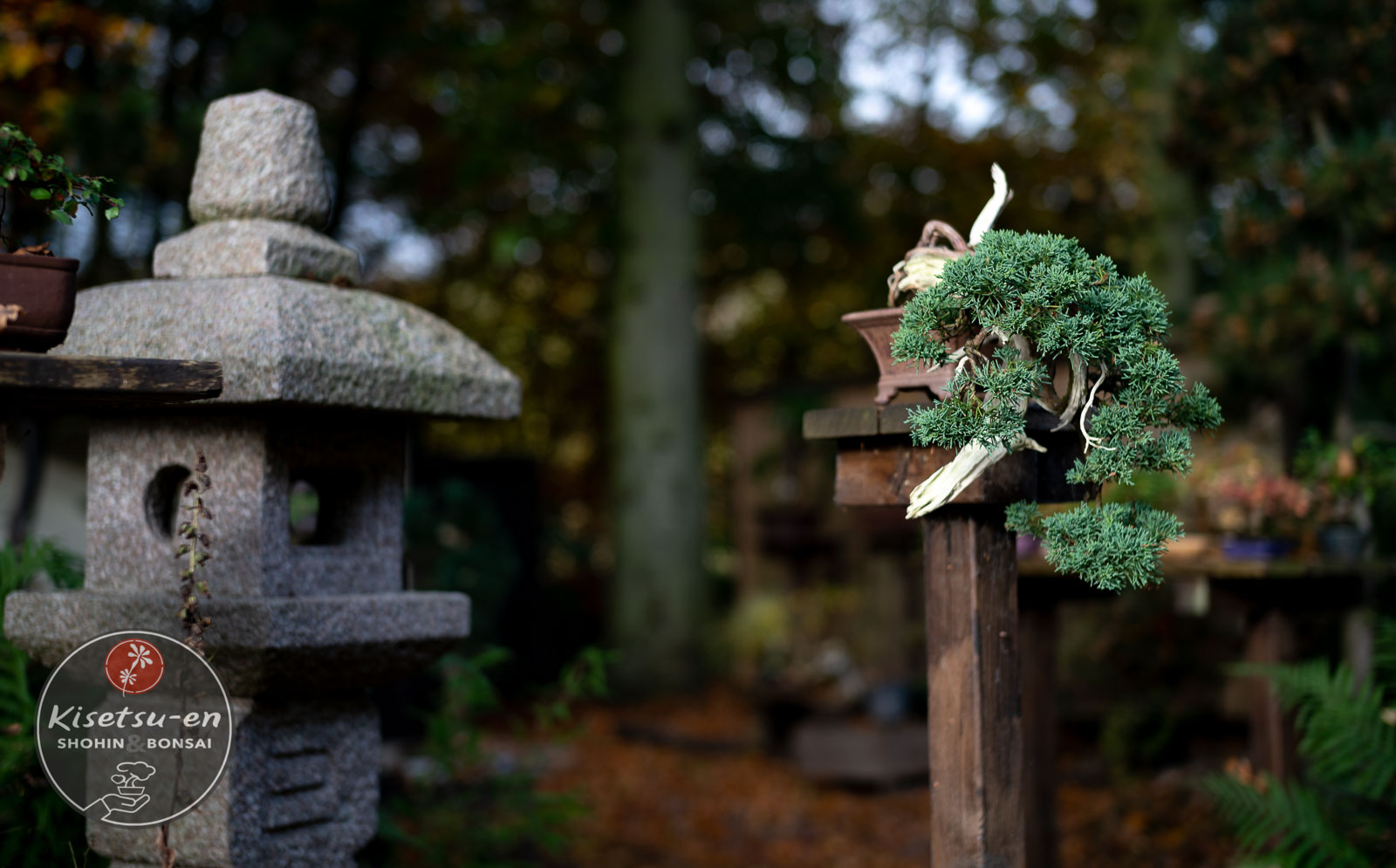
Middle sized bonsai, and Tanuki cheat
Middle-sized bonsai are not in fashion. Have they ever been? I don’t know, but I really think these sizes are overlooked at bonsai shows. That’s one part of this bonsai blog post’s purpose to discuss.
Another subject is a technique I feel is deeply misunderstood. Tanuki, or what is referred to as phoenix grafting. Not to be confused with the variety name of the species posted here, Juniperus c. ´Phoenix´.
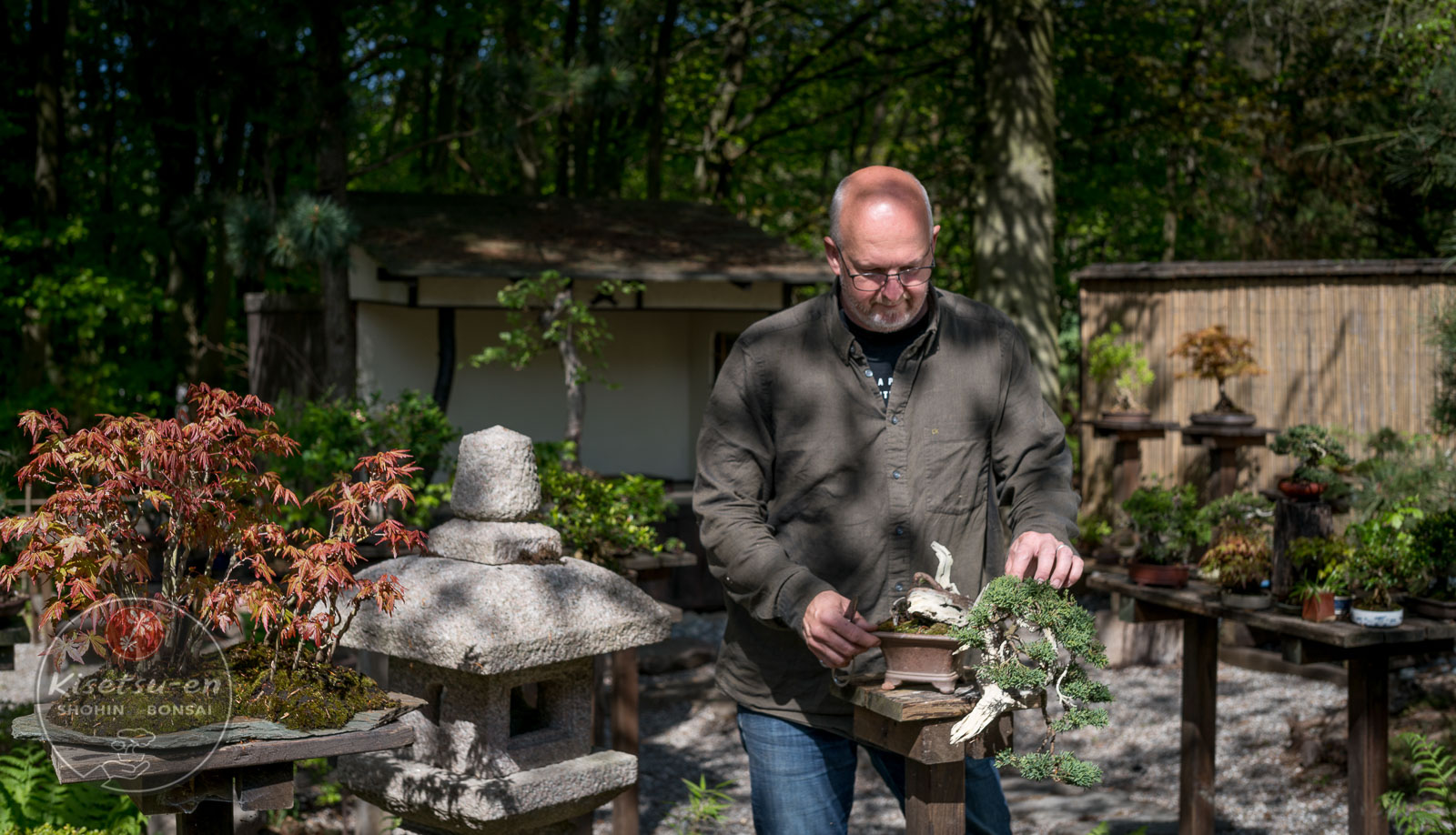
Middle-sized bonsai
They are a bit different than the Shohin category, where more trees are shown together at a display. Often the Kifu category bonsai, and slightly above, are used for either a single bonsai display or the three-point display; using two bonsai, one accent, and a scroll painting. The secondary tree can be a Shohin, and it presents wonderfully sceneries with a combination between a shohin and a middle-sized bonsai I find.
Kifu are between 8 and 12 inches tall, or between 21 to 30 cm. Give and take.
The Kisetsu-en slogan “Make bonsai small again” might fit well with middle-sized bonsai too. Go, give this size a try.
It is far easier to find suitable ordinary material to grow your own bonsai with middle-sized bonsai. It is less demanding than taking care of Shohin easily drying out during summer heat, and it is far easier to overcome pinching, and pruning as well as finding threes that have a trunk thick enough to present a mature old tree in nature.

The Juniperus chinensis ´Phoenix´
A few words about a Juniperus chinensis `Phoenix`. It is grown from ordinary garden nursery material since 2005. It has changed during this time, and today’s height is 43 cm including the jin. 35 cm from top to bottom foliage. In some cases, the jin isn’t included in the measure, if it isn’t very thick for example. Sometimes we write both measures to give a better idea of the size. Pot: Chinese (received as a gift in China).
J. ´Phoenix´ is not a dense variety of Junipers but I still managed to grow foliage clouds fitting the size of this bonsai. The light color of greyish green needle foliage is a nice variation to the darker Shimpaku and Itoigawa junipers. The disadvantage is the longer foliage that needs much care to style in a compact design. The foliage will never be as compact as the well-known varieties and styling must be done according to this to be convincing.
Medium-sized bonsai is for some reason not a popular size for bonsai, which seems to be either very big bonsai or small shohin.
I really like this middle-sized bonsai “Kifu” sized category and slightly above. Fitting the need of many bonsai enthusiasts too I am sure because the material often comes cheap and easier to find.
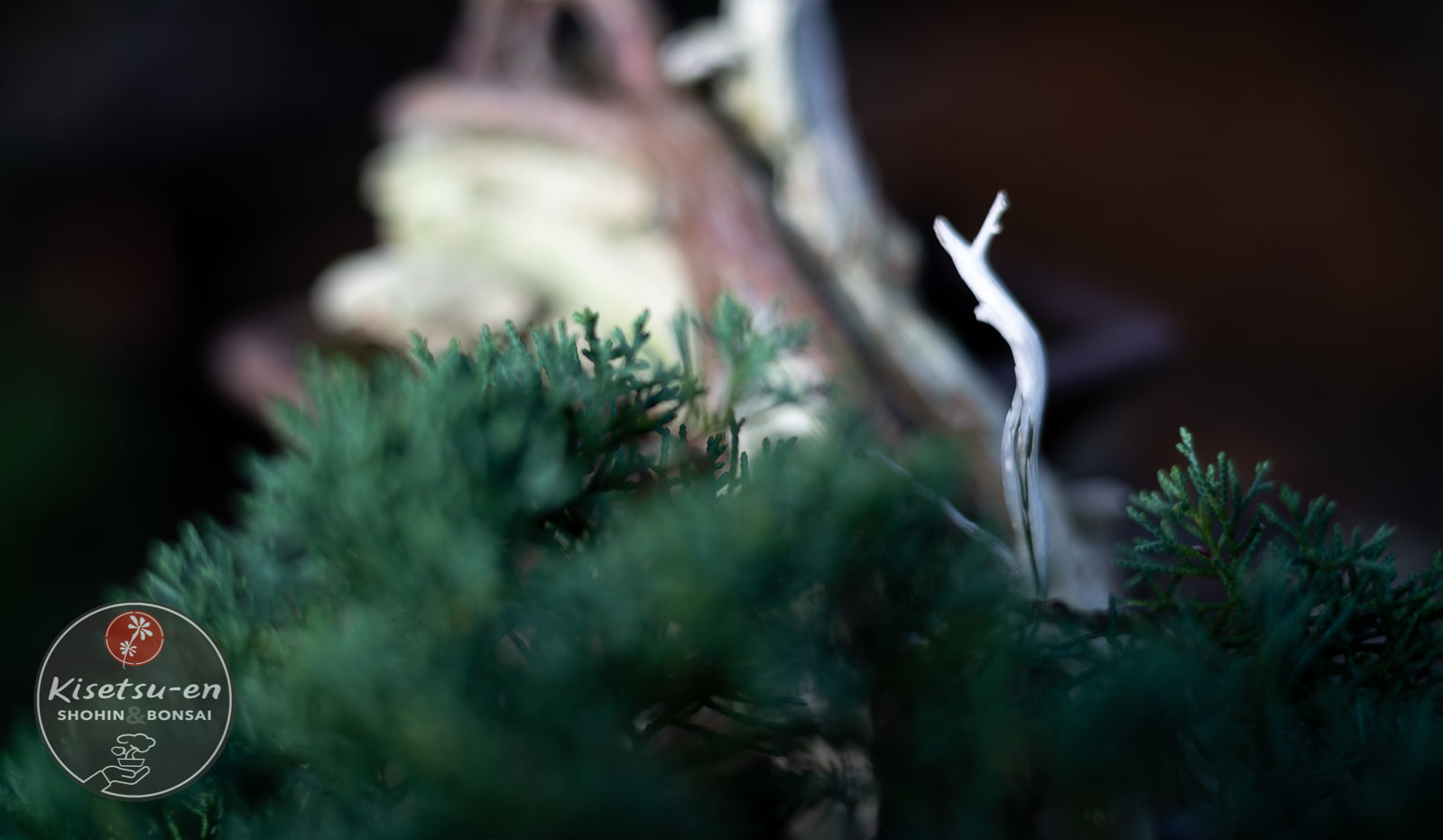
Tanuki – Phoenix graft
One of the big myths of bonsai, as it is perceived in the west, is the marriage between deadwood and a living tree/bonsai.
In Japanese “tanuki” means something like “false”; referring to a piece of deadwood attached to a living bonsai is not real. But it has to be understood differently than we perceive the word false in the west I think.
Throwing away a technique as if it is cheating, or just worse than any other way we use our horticultural and artistic skills, is limiting the possibilities of exploring and developing the art of bonsai.
Tanuki is just an explanation of the combination between deadwood and living parts of a tree, not originally being a part of the same tree.
- Like when a tree has its foliage completely removed in exchange for another type of foliage. A very recognized method to graft tighter and better foliage on Junipers. Newer questioned as false or cheating. 🙂
- Or when bonsai masters grow white pines on roots stocks of black pines to strengthen the healthy growth of a tree. The bottom of the tree is one variety of a tree, and the top another.
- Also not different from grafting branches (or roots) at new positions to develop the most interesting and beautiful bonsai possible.
All just techniques in the hands of an artist.
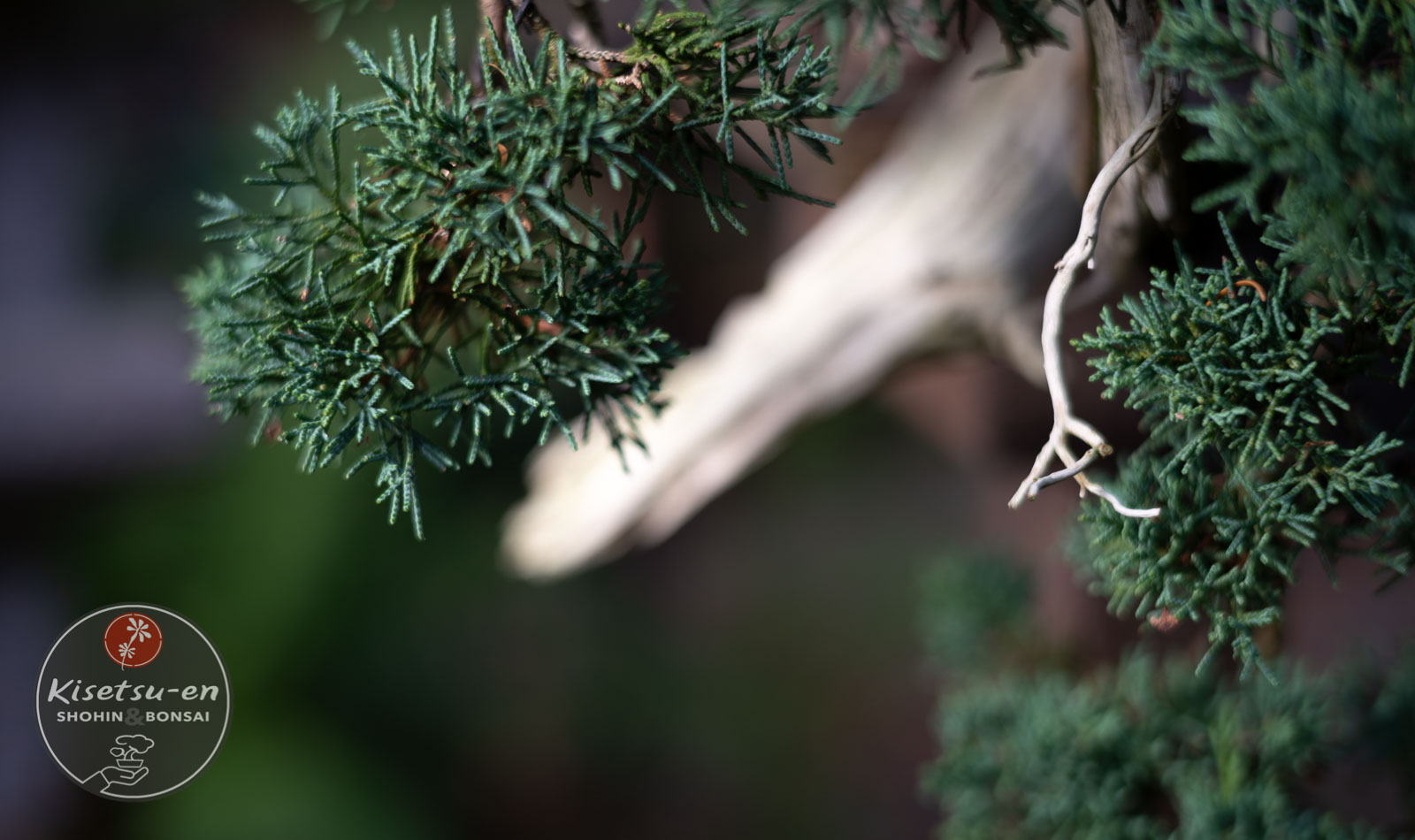
Did you know?
Honestly. Did you notice that some of the deadwood was attached later, and some of it is part of the original tree? Could you see it or not? Does it matter that I know revealed it?
Let’s stop the nonsense and just let creativity rule. 🙂
Combine whatever you want. As long as it looks natural, pleasing, and convincing.
No matter what. This tree has grown on me artistically through the years, and I look forward to refining it slowly in the years coming. Little by little. The journey never stops.
Kisetsu-en Bonsai Online
Monthly a large theme about the seasons is published. Produced as HQ video from the garden and studio with Morten Albek.
now and be become a member of Kisetsu-en Bonsai. Join the special spirit of our bonsai philosophy. Ask your questions in the Q&A about bonsai growing, styling, and care. You get a written and personal answer and selected questions are also answered as video responses in each episode.
JOIN NOW and start your journey with us.
